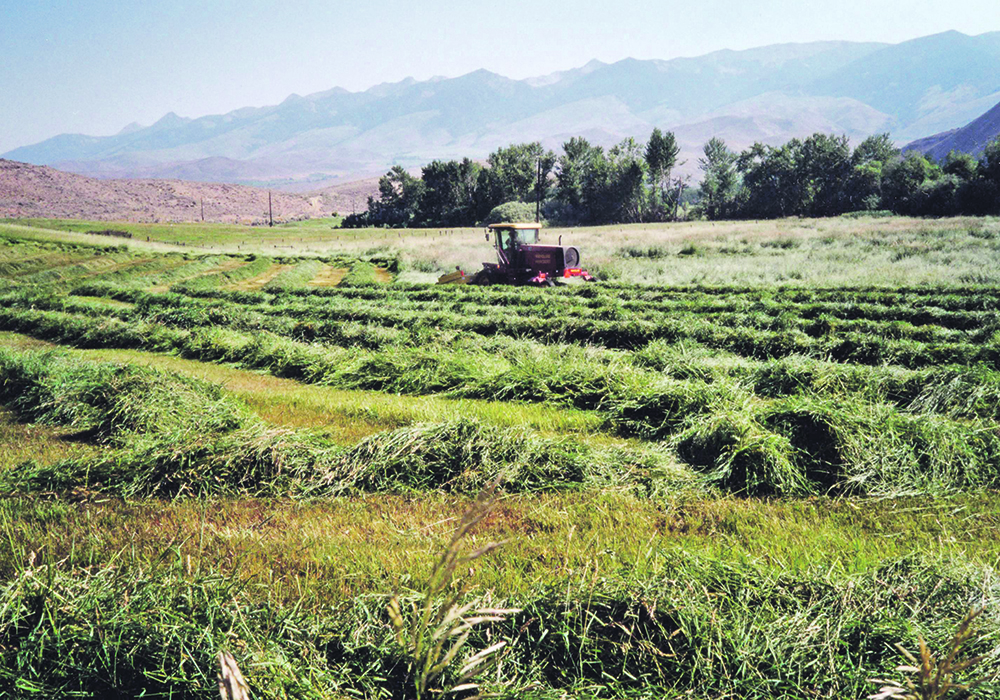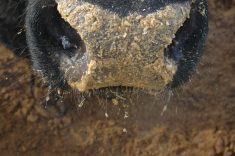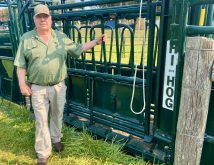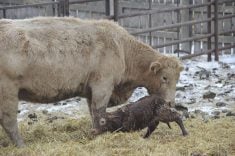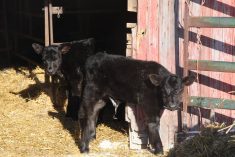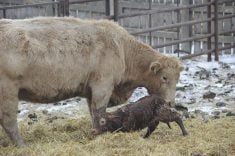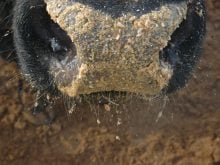Raking windrows into numerous piles can keep cattle grazing longer but the piles must be big enough to find in the snow
Rake-bunched hay is one option to reduce winter cattle feed costs, which are generally the most expensive aspect of owning cattle.
If cattle can graze longer and feed themselves in the field, they also tend to stay healthier, says David Bohnert, beef extension specialist with Oregon State University.
Rake bunching involves raking windrows into numerous piles like tiny haystacks.
“In terms of any published data on this method, I think our experiment station here at Burns (Oregon) was one of the first to really look at it back in the 1980s. Many ranchers in our area use rake-bunched hay for fall and winter feed and it works well. The hay in piles retains its quality and is comparable to baled hay,” says Bohnert.
Read Also

Beef cattle more prone to trace mineral deficiencies
The trace mineral status of our cows and calves is a significant challenge for western Canadian producers and veterinarians.
The piles must be big enough for cattle to find when covered in snow.
“When you put up hay in this manner, make sure it’s not too dry when you rake it into piles. It needs enough moisture to be able to stick together, probably a little more moisture than if you were baling it.”
Ideally the piles will dry further and the hay will bind together so it can better resist wind. Raking the hay when damp may result in some fermentation, which cattle like because the material is sweeter.
“It’s best if you can rake the hay a little green,” says Bohnert. “You also need a different rake to get the windrows into piles. Some people use the old dump rakes and there are some modern ones that work even better. Some of the original ones were horse-drawn and you went through the field scooping up hay and then lifting the rake and dumping it.
“Now there are bigger rakes you pull behind a tractor and you can quickly cover a lot more ground.”
Piles that contain 150 to 200 pounds of hay are most common though size varies. The biggest advantage is that the hay doesn’t need to be hauled from the field, eliminating expense and time. Bohnert says rake bunching typically costs about half as much as baling.
Another advantage is that cattle eat the forage where it was cut and fertilize the field while doing so.
“To utilize rake-bunched hay most efficiently, you can strip graze the field, but many people don’t bother with the electric fencing. They just turn cows into that field. The waste is higher, but it puts more nutrients back into the soil,” Bohnert says.
“Rake-bunching hay is effective in fields and pastures where it’s difficult to haul hay. This method allows you to harvest the hay and utilize it, even if it’s impossible to go in there with a big truck or stack wagon to haul hay.”
It also allows growers to harvest when hay is at the maturity level for best quality.
“If you have a field with lower production and it’s not worth baling, you can still cut it and rake it into piles the cattle can use. Or you just cut it (without raking) and use that field first.
“Some ranchers use rake-bunched fields when they bring cows home from summer range. Some people graze them through winter, but many folks use them mainly for late fall grazing,” says Bohnert.
“Studies here, and in Nebraska and Montana, have shown that stockpiled forage loses a lot of quality by late fall. You have to use a lot of supplement, and the cattle won’t graze all of it. By contrast, if you cut it, the forage is all on the ground in piles and the cattle utilize it better.
“Some people wonder if plants under those piles are damaged. With the forage we have here and in areas where it’s a grass-alfalfa mix, you really don’t damage the forage underneath the windrows or piles,” Bohnert says.
He cautions growers to be aware of the risks associated with rake bunching. It may not work well in areas with high winds or when there is either abundant fall rain or early wet snow.

